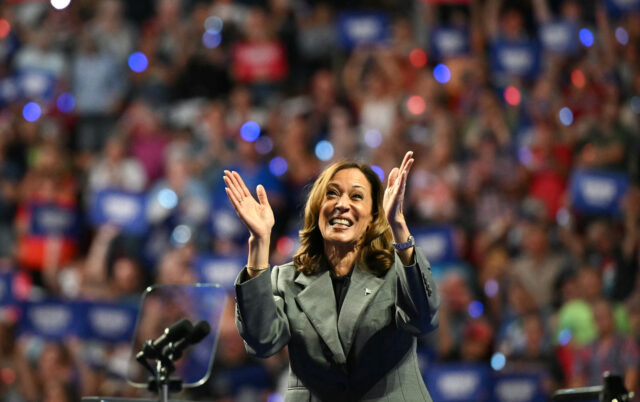The rise of Kamala Harris in national political polls has come at a cost of deteriorating optimism among U.S. businesses.
A survey of business executives in September found a sharp deterioration about output in the year ahead, according to S&P Global. The survey’s future output index fell to its lowest since October 2022 and the second lowest since the end of the pandemic.
The deterioration was led by the services sector, an especially troubling development since economic growth in recent months has largely depended on services while he manufacturing sector has been in a slump
“Business sentiment, demand, hiring and investment are being subdued by uncertainty surrounding the Presidential Election, casting a shadow over the outlook for the year ahead at many firms,” Chris Williamson, the chief business economist at S&P Global, said Monday.
The survey of executives referred to as purchasing managers is considered a key indicator for the economy. It showed that business activity lost some momentum in September but remains robust, thanks largely to strength in the services sector. The output of the manufacturing sector fell for a second straight month, according to the survey.
The prelinary reading of the S&P U.S. services purchasing managers index (PMI) dipped to 54.4 in September, a two-month low, from 55.7 in the prior month. Numbers above 50 signal growth.
The early read of the manufacturing PMI fell to 47 from 47.9, the lowest score in 15 months.
Williams said that “intensifying political uncertainty” and weakness in manufacturing is acting as a “substantial headwind” for the economy.
“The sustained robust expansion of output signaled by the PMI in September is consistent with a healthy annualized rate of GDP growth of 2.2% in the third quarter. But there are some warning lights flashing, notably in terms of the dependence on the service sector for growth, as manufacturing remained in decline, and the worrying drop in business confidence,” Williamson said.
Inflation also appears to be picking up. The September survey showed that prices charged for goods and services rose at the fastest rate since March, representing the first acceleration of inflation in four months.
“The survey’s price gauges meanwhile serve as a warning News Release Copyright © 2024 S&P Global that, despite the PMI indicating a further deterioration of the hiring trend in September, the FOMC may need to move cautiously in implementing further rate cuts. Prices charged for goods and services are both rising at the fastest rates for six months, with input costs in the services sector – a major component of which is wages and salaries – rising at the fastest rate for a year,” Williamson added.

COMMENTS
Please let us know if you're having issues with commenting.